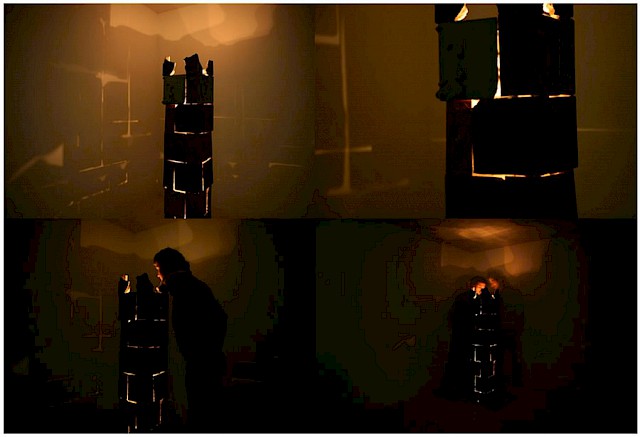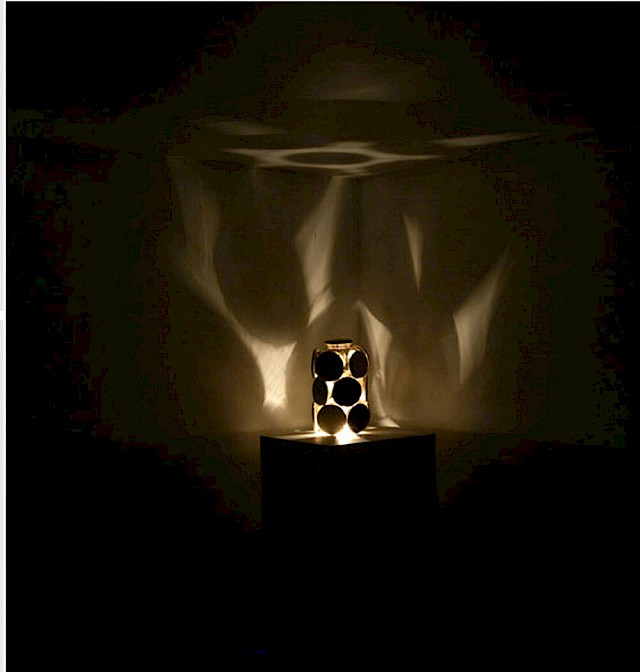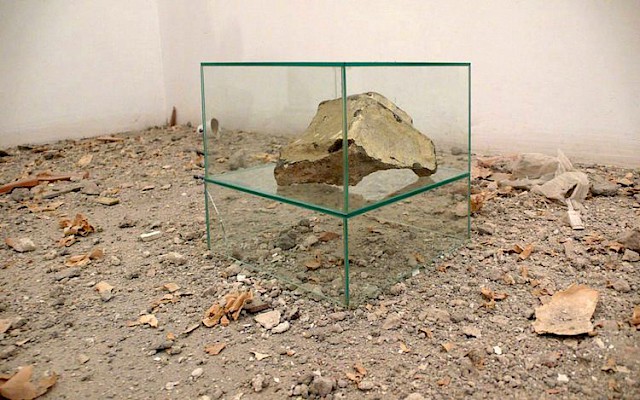Warped Time
23.Oct.07
31.Dec.07

When
23.Oct.07 - 31.Dec.07
Venue
Via dei prefetti, 17
00186 Roma
Precariously perched on top of each other, six rings of tiles constitute the body of Gianluca Malgeri's most recent work-in-progress. The fragile tower is topped with a few broken tiles that allow the average height visitor (or taller) a glimpse into its interior. This is lit by numerous small candles, reminding one of the rows of candles in Catholic churches, at once humble and intense. But concurrently, the tower shines a different light – one down the lane of history to the firebird Phoenix, always rising from its own ashes. The tower is situated in a ruinous landscape of Roman rubble, found outside the gallery space, as if reborn or a lone survivor after a catastrophe. Thus the sculpture, drawing on German crafts and aesthetics, is intertwined with the local Italian environment.
With this work, Malgeri continues his explorations of the tiled stove as an object of inquiry, as earlier seen in Torre di Ishstar (2004), Faro di Alessandria (2006), and Torre di Arianna (2006). Together, the four sculptures constitute not only the investigation of a generic form, but could also be considered as building elements for a larger structure, perhaps even the pillars of a new urban utopian architecture, rising out of the ruinous surroundings. Another component part of this endeavour is Malgeri's Amphora (2007). His interest in architecture is apparent in collages such as Città del sole (2004), in which he has assembled photographs of cut-out tiles and carpets to form a complex and intricate spatial structure. Layer upon layer, yet simply arranged and with economic means, the collage charts an architectural vision that becomes a subtle backdrop for the towers.
In Malgeri's sculpture, the standard stove's blazing fire is exchanged for the gentle shimmering and heat of the candles, associated with cosyness rather than practical function. An inhabitant of intimate and domestic spheres, the tiled stove is an everyday object. But in Malgeri's version, the everyday is coupled with the foreign: he does not attempt to level out the cracks; he refuses the seamlessness of sleek contemporary design. Instead, his work is a poetic gesture, drawing on the tradition of Arte Povera and its focus on linking life and art. The domestic tiles, varying in colour, pattern, and size, are joined to create new assemblages that preserve disjunction and fragility at their core. An Italian living in Berlin, Malgeri’s relation to the tiles that were formerly used for German tiled stoves is that of a stranger, an observer, and a craftsman who is only partially acquainted with the tradition into which he ventures. The artist describes his work as an instance of pseudo-archaeology: what initiated the entire tower project was the finding of a stone fragment in the streets of Berlin. But instead of digging in an archaeological site, he has been dealing with a tradesman: the pile of tiles of which the towers have been created was bought from a local second-hand dealer. As a visionary archaeologist, Malgeri investigates our memory of the objects through his imaginary associations, piecing fragments together, and unfolding possible narratives. His structures are thus not faithful reconstructions of a bygone era, but the projection of history into the future through new structures that outline his visionary open-ended world. The found fragment is kept and presented in a glass reliquary.




